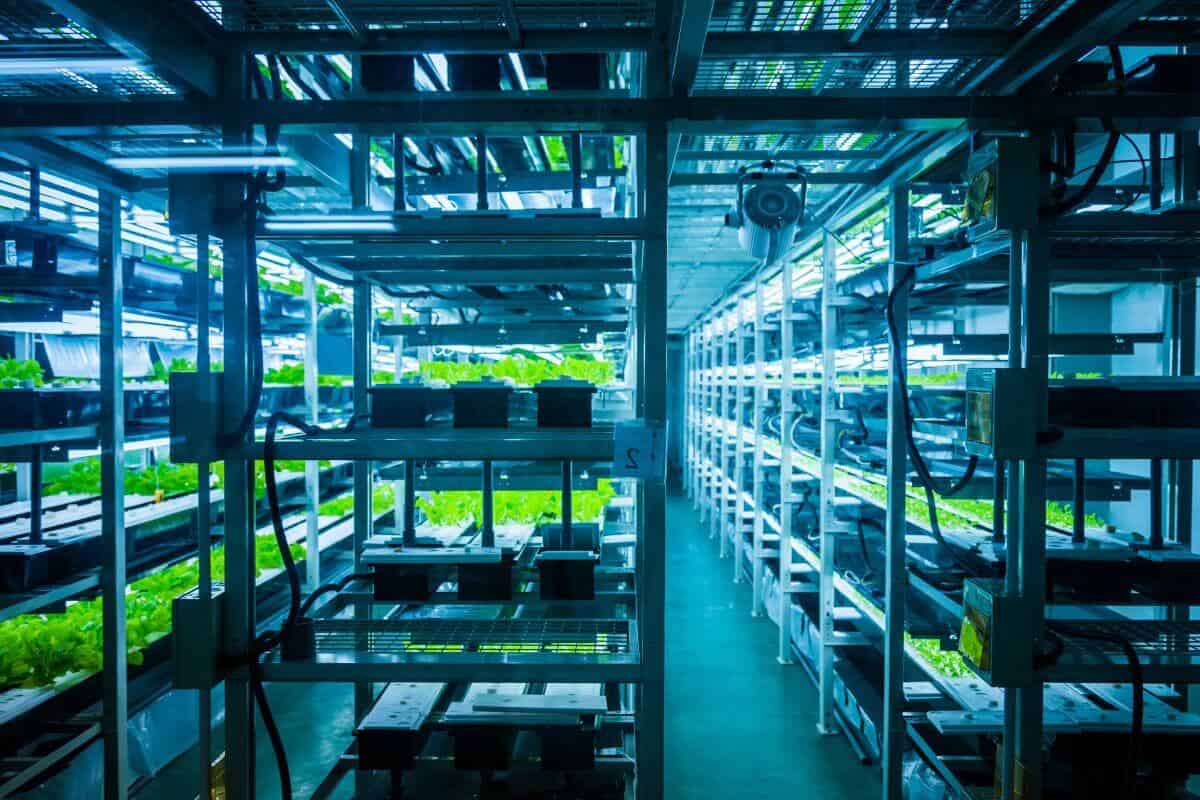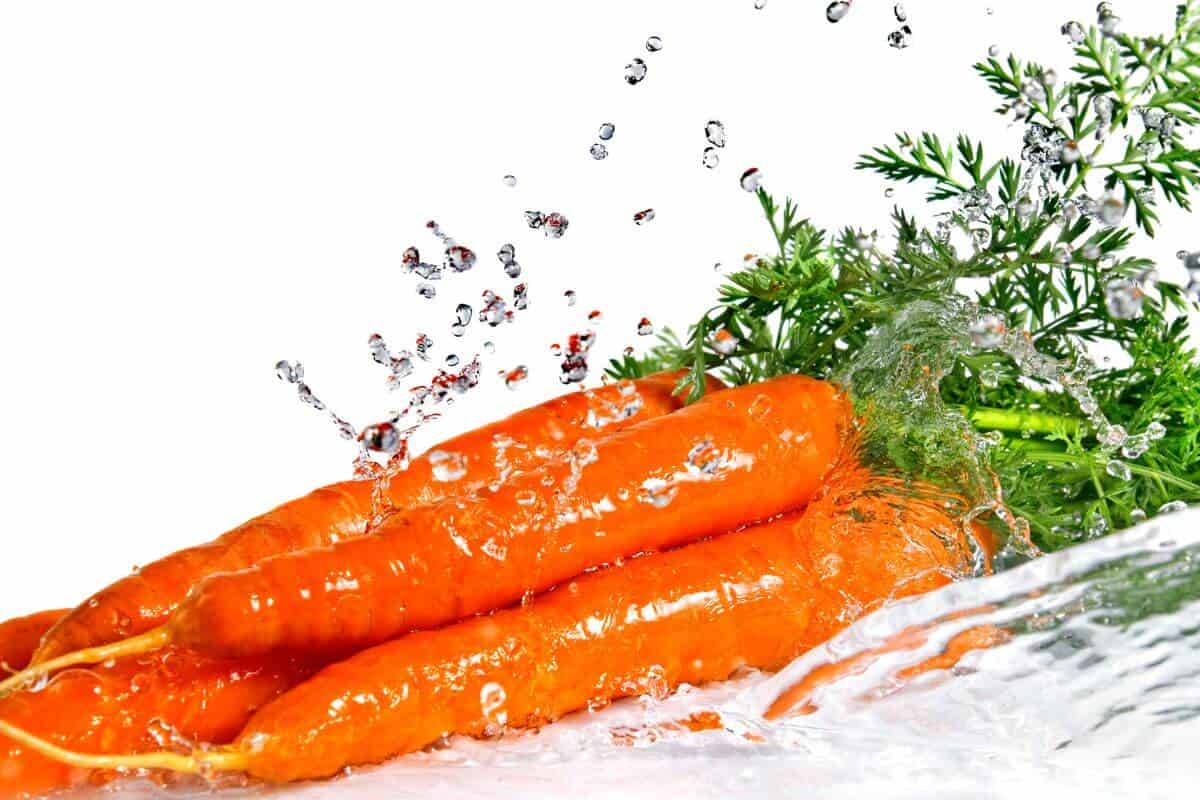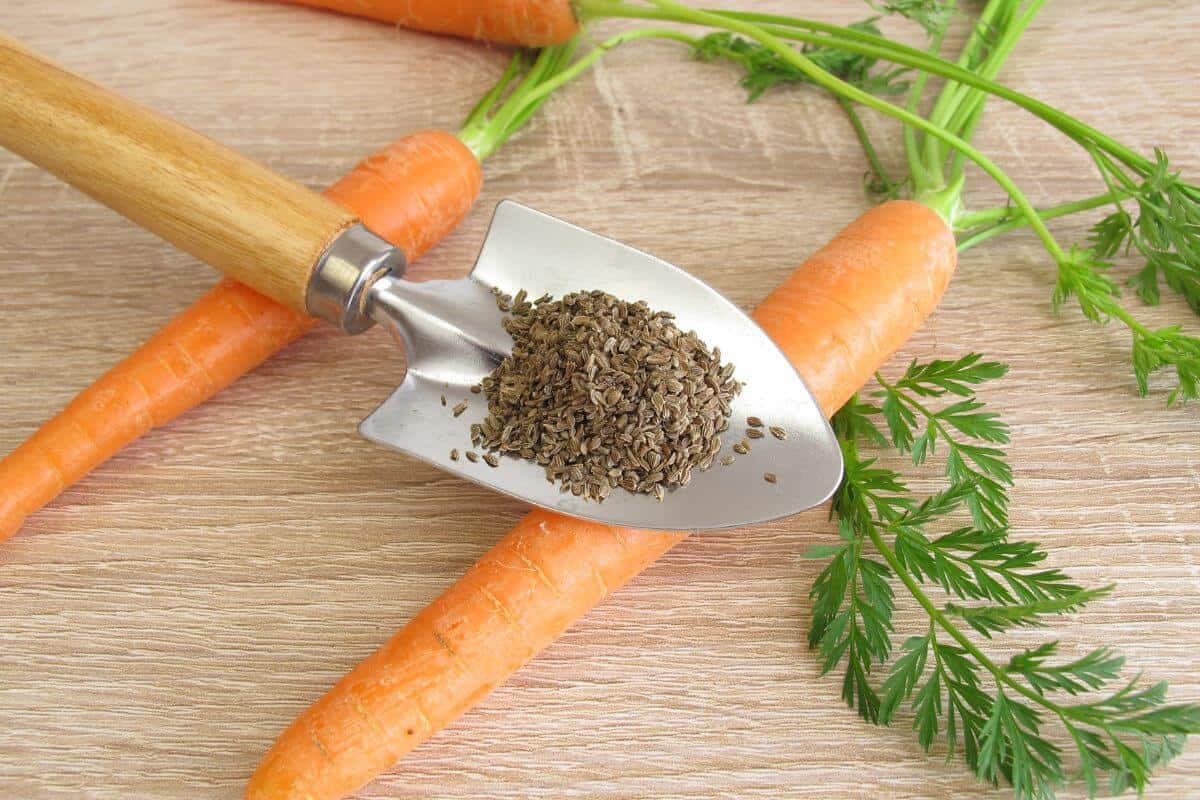Carrots, the humble root vegetable, are a global superstar! As a source of vitamin A and vitamin C, they’re a gardener’s dream come true and a healthy addition to any plate.
Discover the magic of hydroponic gardening—it’s an efficient method for growing delicious carrots in any limited space!
Plus, with results in just a few months, you’ll be enjoying your bounty in no time!
Get ready to grow the freshest and tastiest carrots you’ve ever had! But before you get started, let us spill the dirt on what you need to know about hydroponic carrot cultivation.
- Related article: Which Plant Is Easy to Grow at Home?
We’ll take you through a complete guide on everything you need to know about growing carrots in hydroponics, the pros and cons of hydroponically-grown carrots, and much more!
Why Grow Hydroponic Carrots

Benefits of Growing Hydroponic Carrots
Some benefits of growing hydroponic carrot plants include:
- You don’t need a large space or area to grow carrots in your hydroponic garden.
- Hydroponic systems require less water and fertilizer.
- Hydroponic carrots taste better than carrots grown in soil.
- Growing carrots in a hydroponic system will increase your yield.
Drawbacks of Growing Hydroponic Carrots
You may also experience some drawbacks with growing hydroponic carrots.
Here are some of the drawbacks that you may experience growing hydroponic carrot plants:
- Carrots are rooting vegetables so they don’t do well in wet environments. Carrots will begin to rot if they are exposed to excessive amounts of water.
- Deformed carrots are a common problem experienced with growing hydroponic carrots. This is caused by insufficient space between the plants or a shallow growing tray.
Equipment Needed to Grow Hydroponic Carrots

Starting your own hydroponic carrots garden will require some equipment.
In order to begin a hydroponic garden, the following items are required:
- A container, specifically a 5-gallon bucket, or a grow tray – Both are viable options for cultivating crops in hydroponic systems. It holds the nutrient solution and the medium where the plants are rooted.
- Growing medium – Any substance that provides support for plant roots, it can be loose particles such as perlite, vermiculite, coconut coir, clay pebbles, or solid blocks like rockwool cubes or slabs.
- Carrot seeds – Small and round in shape with a pointed end. They are the reproductive part of the carrot plant that contains all the genetic information within it, necessary for germination.
- Hydroponic nutrients – Nutrient-rich solutions used to feed plants while they are grown in a soil-less medium. They provide all of the essential macro-nutrients (nitrogen, phosphorus, potassium) and micro-nutrients (iron, zinc etc.) required for plant growth and development.
- Grow lights – Artificial lighting sources that simulate the natural light of the sun. These are commonly utilized in hydroponics to facilitate photosynthesis and furnish the necessary amount of light for a specific crop.
- pH test kit – A device used to determine the acidity and alkalinity of a liquid. It is useful in hydroponics to determine the pH level of the nutrient solution, which is crucial in ensuring its compatibility with plants.
Once you have gathered all the equipment needed, it’s time to start your hydroponic carrot garden.
We’ll take you through a guide on how to embark your journey to carrot hydroponics gardening!
How to Grow Hydroponic Carrots

1. Choose the Carrot Variety to Grow
Selecting appropriate carrot varieties is the first step towards cultivating them successfully in a hydroponic system.
There are several varieties of carrot available, but four of the most popular varieties and most commonly grown in hydroponic systems are:
- Chantenay Carrots – Known for their rich flavors, these carrots are bulkier than normal, and take 65-75 days from seed to harvest. They must be harvested rather quickly or they will begin to develop a fibrous texture.
- Nantes Carrots – An almost coreless carrot with sweet flavor. These carrots prefer growing in a loose and well-draining growing medium. The time growing period from seed to harvest will take between 65-75 days.
- Imperator Carrots – Typically grow well in a deeper growing tray with a loose growing medium. These carrots will be ready to harvest from 65-78 days.
- Danvers Carrots – A dark orange-colored kind and can withstand heavier growing mediums. It can take up to 87 days from seed to harvest these carrots.
2. Choose the Hydroponic Technique
The process of growing carrots in a hydroponic system is comparable to growing them in soil, except that a growing medium is used instead of soil.
Carrots grown hydroponically do not have their roots directly in a nutrient solution, unlike most other hydroponic plants.
Choosing the correct hydroponic method for growing carrots is essential. Here are some of the preferred hydroponic systems for growing carrots:
Ebb and Flow System
The Ebb and Flow system, otherwise known as the “Flood and Drain”, is a hydroponic system that involves the periodic flooding and draining of a nutrient solution.
Your hydroponic system is flooded with nutrients, allowing your plants to absorb nutrients before it is drained off.
Drip System
The Drip hydroponics setup uses a pump that is connected to a timer to regularly feed your plants with nutrients and water.
This system is also referred to as the trickle system because it uses emitters to drip nutrient solution onto your plants.
3. Light and Temperature Conditions
Hydroponic systems can be cultivated both indoors and outdoors.
Indoor hydroponic systems need plenty of light for optimal plant growth. For carrots, 12 to 16 hours of daily light is necessary, along with 8 to 12 hours of darkness.
Carrots thrive in sunny locations, making it ideal to plant them in an outdoor garden.
Place your carrots in a sunny area that offers 6-10 hours of continuous light.
Your carrots will thrive in temperatures between 60°-80°F as carrots don’t grow well in colder climates.
4. Water and pH Levels
Don’t let chemical-laden water rain on your hydroponic parade! Choose a reliable water source and watch your garden grow like never before.
It is recommended to test water from a natural source before using it, if you feel like you’re about to use clean water.
Once you’ve locked down a trustworthy water source, it’s time to whip out your pH testing kit. With a little tweaking here and there, you’ll be able to dial in that perfect pH balance!
Carrots are traditionally grown in soil that is slightly on the acidic side. In a hydroponic system, carrots grow best with water that has a slightly acidic range of pH balance between 6.0-6.5.
5. Nutrient Solution

Carrots require three essential nutrients—nitrogen, phosphorus, and potassium—to facilitate growth.
Ensuring the appropriate levels of essential nutrients are present in your hydroponic water is crucial for optimal plant growth.
The hydroponic nutrient solution of your water should be between 1.0 and 2.0 EC when growing carrots.
These root vegetables aren’t particularly heavy feeders, and low nitrogen fertilizers are best for carrots as it discourages leafy growth.
Use an all-around fertilizer solution with balanced nutrients or a nutrient solution that has been formulated for root crops.
Lightly sprinkle the nutrient solution over your growing medium once a week, or just enough to keep the top layer of the growing medium wet for optimal nutrient absorption.
6. Growing Medium
Carrots are root vegetables and grow under the soil. They typically grow best in soil that has excellent drainage, and is rather loose.
Hydroponic carrots can be grown in several different types of growing mediums. The best-growing medium for carrots should have enough space for roots to expand.
The most common types of growing medium used to grow hydroponic carrots are:
Coco Coir
Coco coir is pH-neutral biodegradable growing medium that is made from coconut husks. This growing medium is lightweight and is the preferred option for cultivating hydroponic carrots.
Vermiculite and Perlite
Vermiculite and Perlite are two alternative growing mediums that can be used individually but are often mixed together.
A combined mix of the two growing mediums offers a lightweight growing medium with exceptional drainage.
The combination is commonly utilized in hydroponic systems for cultivating root vegetables like potatoes, beet root, and carrots.
7. Pollination
Plants undergo pollination through means such as wind, insects (primarily bees), or animals in the natural world. The pollen from a male plant is transferred by a pollinator to female plant gametes.
After pollination, a plant initiates the process of seed production.
Hydroponic systems are typically located indoors, which can disrupt the natural pollination process. Growers who choose to cultivate plants via hydroponics will need to pollinate their plants manually.
Once a carrot plant has developed, it will begin to produce a flower.
If you would like to produce your own carrot seedlings, you will need to have several carrot plants simultaneously flowering.
You can pollinate these plant by brushing your hand across the flower, one after the other.
The ventilation in your hydroponic room may assist with cross-pollination, but this is dependent on the type of hydroponic setup.
8. Pruning Plants
Carrot plants don’t grow tall, and hardly need to be pruned, so you can simply let them flourish.
The green tops of carrot plants can be used as a nutrient guide. If there are any deficiencies in your nutrients, it will be indicated by discolored foliage.
The leaves of young carrot plants are edible. Don’t remove all of the leaves as the plant still needs to grow.
9. Propagating the Hydroponic Carrots

Carrots can either be propagated by seed or from carrot tops.
For a hydroponic system, germinating seeds is the preferred method of propagating carrots.
Propagating carrots seeds in a hydroponic system is done by placing carrots seeds one-half-inch layer under your growing medium.
Place the seeds in a growing medium and moist the surface gently.
The optimal temperature range for seed germination is between 60° to 65°F, thus ensuring that the growing medium is warm is important. Water the carrot seeds with a warm nutrient solution on a daily basis.
Ensure that the planted seeds are given 12 hours of sunlight per day. The carrot seeds will take between 7-14 days to sprout.
10. Harvesting Carrots
Multiple carrot species are capable of being cultivated in a hydroponic system.
Carrots can be harvested within 2 to 3 months (65-75 days), depending on the variant and growing conditions.
Unearth your sweet, crunchy carrots by giving their leafy locks a gentle tug!
The carrots should easily pop out of your growing medium. Trim the leaves off the carrots and rinse well before storing.
Troubleshooting Hydroponically Grown Carrots

Growing hydroponic carrots will come with its challenges.
We will examine common growth issues, pests, and diseases that could present challenges.
We will also provide potential solutions to the issues at hand in order to mitigate the negative impact on crop yields.
Common Growth Problems
Carrots can prove challenging to grow, and one of the most common challenges faced is poor root development.
Several factors can cause this, such as excessive levels of nitrogen, compacted growing medium, or any damage to the roots.
Carrots require space to expand and grow, and a common problem associated with growing them is overcrowding in limited spaces.
In order to prevent your carrots from being overcrowded, ensure that there is an adequate gap between each seedling when planting them.
Other common growth problems are a result of a lack of nutrients, insufficient watering, overwatering, and cooler temperatures.
Common Pests for Hydroponic Carrots
One of the greatest advantages of growing hydroponic carrots is that they are almost entirely free from any pests.
A hydroponic system provides no soil for critters to bury into, thus eliminating the most common pests.
The feathery leaves of a carrot plant are pest and disease resistant. However, on occasion, you may find aphids, mealy bugs, spider mites, or carrot rust fly larvae.
These pests can easily be treated by spraying Neem oil, pesticides, or insecticidal soaps.
Prevent carrot pests from attacking your plants by regularly checking the health of your plants, spraying organic pesticides over them, and removing any plant that shows signs of disease.
Common Disease
Carrots are grown underground, but this doesn’t exclude them from being susceptible to diseases.
These tasty roots are prone to fungal diseases and leaf diseases such as Alternaria Leaf Blight, Black Rot, and Bacterial Crown Rot.
Leaf blight is caused by Alternaria spp.pathogens, and it can easily be noticed by its black leaf spots with yellow centers that forms on the foliage of carrot leaves.
Black rot is caused by Thielaviopsis basicola pathogens. This bacterial disease is primarily a post-harvest disease.
It causes the roots of a carrot to develop dark leaf spots and the plant to wither then eventually die.
As this disease is bacterial, fungicides are ineffective, whereas copper products can be effective.
These diseases can be prevented by providing adequate ventilation, leaving spaces between each plant, and eliminating common pests as they arise.
Keep an eye out for other common diseases that plague hydroponic carrot gardens such as Pythium, Fusarium wilt, and Phytophthora.
Final Thoughts on Growing Hydroponic Carrots
Grow your own fresh produce with hydroponic carrots—the sustainable and efficient solution!
Say goodbye to harmful chemicals and pesticides! Grow your own delicious and nutrient-packed carrots in a controlled environment!
Revolutionize your gardening game with hydroponic carrots—the perfect choice for both small-scale commercial projects and at-home green thumbs!
Starting a hydroponic garden requires careful consideration of various factors, such as pH levels and nutrient selection, in order to promote proper growth.
Through the adoption of suggested techniques and acquisition of superior equipment, it is possible to achieve an abundant harvest of nourishing and flavorful and fresh carrots!
Take a look at these interesting reads to know more about growing carrots hydroponically:

